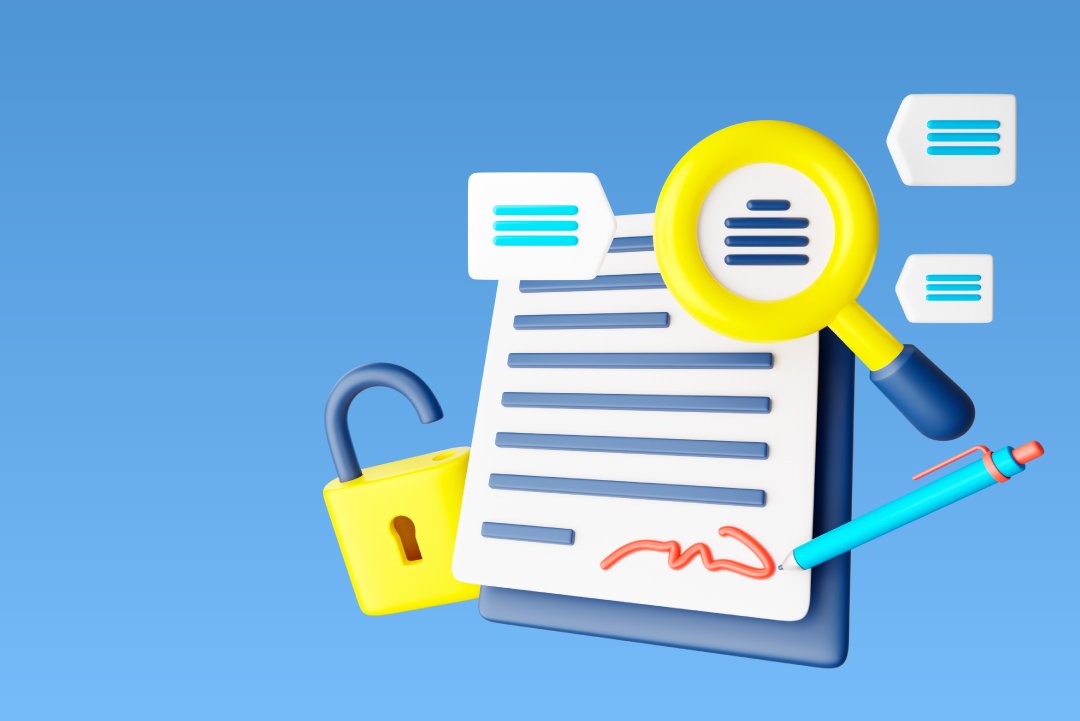- Introduction
- What Is a White-Label Agreement?
- Core Components of White-Label Contracts
- Intellectual Property: The Cornerstone of Clarity
- Branding and Liability Considerations
- Termination: Plan for the End from the Start
- Tips for Negotiating a Fair White-Label Agreement
- Possible Real-Life Risks and Legal Protections
- Why This Matters More in 2025
- Conclusion
- FAQs
- About Softvil
Introduction
As more businesses look for ways to accelerate digital transformation and reduce time-to-market, White-label SaaS solutions have gained immense popularity. These rebrandable, ready-to-market platforms allow startups and SMEs to launch powerful digital products without investing heavily in development. But with opportunity comes responsibility—especially when it comes to the legal framework surrounding white-label agreements.
Understanding the legal essentials of these contracts is critical for protecting your interests, avoiding costly disputes, and ensuring long-term business viability. This guide walks you through the fundamental elements of white-label agreements, including intellectual property rights, branding permissions, liabilities, termination clauses, and tips for negotiating fair terms.
What Is a White-Label Agreement?

A white-label agreement is a legal contract between the software provider (vendor) and the reseller (buyer) that defines the terms and conditions under which a product—typically a White-label SaaS solution—can be rebranded and sold under the buyer’s name. These agreements allow businesses to offer services using their own brand identity while the actual technology remains owned and managed by the vendor.
This arrangement plays a significant role in SaaS solutions for startups, allowing them to rapidly enter the market with a mature product. However, without a strong legal foundation, both parties may face confusion or conflict, particularly in areas like ownership, responsibility, and termination rights.
Core Components of White-Label Contracts

A comprehensive white-label agreement typically includes several critical sections. Here’s a breakdown of the core components you must review or include:
Scope of the Agreement
Defines what software or services are being provided and under what terms they may be rebranded and resold. This may include geographic limitations, use cases, or industry-specific restrictions (e.g., fintech, e-learning, healthcare).
Branding and Customization Rights
Outlines the extent to which the buyer can modify the software’s appearance, interface, or features. In the era of White-label software 2025, branding flexibility is often a key selling point—but it’s vital to clarify whether the provider will support such changes and who bears the cost.
Intellectual Property (IP) Rights
Specifies who owns the code, product architecture, and any enhancements or modifications. In most cases, the vendor retains full IP rights, granting the buyer only a license to use and resell under specified conditions. Avoid ambiguity here—IP rights must be explicitly stated to prevent future disputes.
Support and Maintenance
Defines the level of support offered (e.g., technical support, bug fixes, software updates), response times, and whether service-level agreements (SLAs) are included.
Fees and Payment Terms
Clearly details pricing models, whether one-time license fees, revenue-sharing, or monthly subscriptions. For startups looking for cost-effective software solutions, predictable pricing models can reduce financial risk.
Liability and Indemnification
Outlines each party’s responsibility for damages, third-party claims, or performance failures. Vendors typically want to limit liability, while buyers want to ensure protection in case the software fails to meet promised functionality or causes harm.
Termination Clause
Specifies conditions under which either party may terminate the agreement. This includes breach of contract, insolvency, non-performance, or simply with notice after a defined period.
Data Privacy and Compliance
If the White-label SaaS handles user data, this section must cover GDPR, HIPAA, or other industry regulations. Especially in sectors like healthcare or finance, failure to comply can lead to severe penalties.
Intellectual Property: The Cornerstone of Clarity

Among all legal components, intellectual property rights are arguably the most critical. White-label agreements must make it absolutely clear that the buyer is not acquiring ownership of the software, only a license to use and sell it under their brand.
There should be distinctions between:
- Pre-existing IP (developed by the vendor before the agreement)
- Custom enhancements paid for by the buyer
- Joint developments created during the partnership
Failure to clarify these points can result in legal battles, particularly if the buyer tries to replicate or sell the product independently after the agreement ends.
Branding and Liability Considerations

In white-label software 2025, branding is everything. But with the right to rebrand comes the risk of reputational damage—both for the vendor and the buyer.
Here’s what to consider:
- Who handles marketing claims? Buyers should not promise features or capabilities the software doesn’t support.
- What if something breaks? If a white-labeled platform experiences downtime, customers blame the brand they bought from—the buyer. Make sure the agreement includes fallback support, scheduled maintenance notices, and uptime guarantees.
- What about third-party services? If the white-labeled software integrates with third-party APIs, who is liable when they fail?
Termination: Plan for the End from the Start

Even the most promising SaaS solutions for startups may outgrow their white-label arrangement. Whether transitioning to a custom platform or pivoting business models, startups need exit strategies baked into their contracts.
Termination clauses should address:
- Notice periods (e.g., 30 or 90 days)
- Obligations upon termination (e.g., removing branding, returning confidential data)
- Transfer of customers or data (e.g., how existing users are handled)
- Post-termination support, if any
Without these details, ending a white-label relationship can lead to legal conflicts, data loss, and damaged customer trust.
Tips for Negotiating a Fair White-Label Agreement

Whether you’re a startup founder or an SME entering white-label SaaS, here are key tips to ensure your agreement works in your favor:
Consult a Legal Expert
This may sound obvious, but too many startups skip this step. Investing in legal counsel now is far more affordable than dealing with lawsuits later.
Prioritize Clear Licensing Terms
Ensure the license granted is well-defined: is it exclusive, non-exclusive, perpetual, or time-limited? Is sublicensing allowed?
Ask for Performance Benchmarks
If you’re committing to a SaaS solution, it’s reasonable to expect minimum uptime, load times, and customer support standards.
Negotiate Branding Flexibility
Startups often pivot. The more branding control you retain, the more freedom you’ll have as your business grows.
Limit Your Liabilities
Make sure your liabilities are proportionate to your role. Ask for indemnity clauses protecting your brand from failures rooted in the vendor’s code.
Possible Real-Life Risks and Legal Protections

While white-label SaaS can accelerate growth, there are real risks without proper legal safeguards. Let’s explore a few scenarios and lessons:
Case 1: The Unclear Ownership Trap
A startup paid for major customizations but didn’t secure IP rights. After scaling, they realized they couldn’t transfer or replicate the technology—slowing growth and increasing costs.
Lesson: Always clarify who owns custom developments.
Case 2: The Silent Termination
An SME launched a promising white-label SaaS in the education space. Mid-year, the vendor ended the agreement with 30 days’ notice. The SME lost hundreds of active users and revenue.
Lesson: Negotiate longer notice periods and transition support for termination clauses.
Case 3: The Compliance Misstep
A healthcare startup using white-label software 2025 failed to verify HIPAA compliance. They were fined after a data breach—even though they didn’t build the platform.
Lesson: You’re liable for user data—ensure compliance and audit trails are part of your agreement.
Why This Matters More in 2025

The future of SME digital transformation is increasingly tied to ready-made, branded digital solutions. As demand grows, so does competition—and risk. Startups must secure not only their go-to-market strategy but their legal footing as well.
With White-label software 2025 emphasizing low-code, integration-friendly platforms, the opportunities are massive—but so are the complexities. Legal diligence isn’t optional; it’s a critical investment in protecting your reputation, customers, and business value.
Conclusion
White-label SaaS is revolutionizing how startups and SMEs scale—offering speed, efficiency, and innovation at a fraction of traditional development costs. But these benefits only materialize if the legal foundation is strong.
Whether you’re a first-time founder or a growing business seeking cost-effective software solutions, understanding white-label agreements is essential. From IP rights and branding permissions to termination clauses and liability, each component plays a pivotal role in your long-term success.
So before you sign that next SaaS solution for startups, make sure you’ve read the fine print—and better yet, helped write it.
FAQs
A strong white-label SaaS agreement should include scope of use, intellectual property rights, branding permissions, support terms, liability, termination clauses, and compliance requirements. These protect both the vendor and the buyer.
Typically, the vendor retains ownership of the software’s intellectual property. The buyer receives a license to rebrand and resell it under agreed terms. In the context of white-label software 2025, this clarity is critical to avoid future legal disputes.
Startups should consult legal experts, ask for clearly defined license rights, ensure branding flexibility, and negotiate reasonable termination periods. This helps ensure the agreement supports cost-effective software solutions without compromising control or growth potential.
Yes, to an extent. If the branded platform fails, customers will hold the buyer responsible. That’s why liability, indemnification, and support terms are essential to include—especially in SaaS solutions for startups where reputation is key.
By offering ready-to-use platforms under their own brand, SMEs can adopt digital tools quickly and affordably. Well-structured contracts ensure legal protections while enabling seamless, scalable SME digital transformation.
About Softvil
Softvil Technologies is a leading provider of innovative, white-label SaaS solutions tailored for startups and SMEs. With deep expertise in scalable platforms, branding flexibility, and rapid deployment, Softvil empowers businesses to accelerate their digital transformation through secure, cost-effective software solutions that are ready to launch under their own brand.

